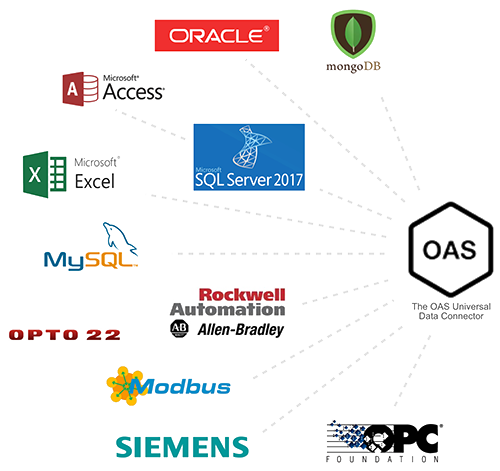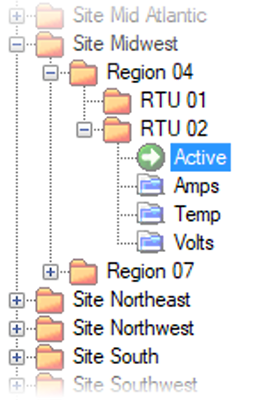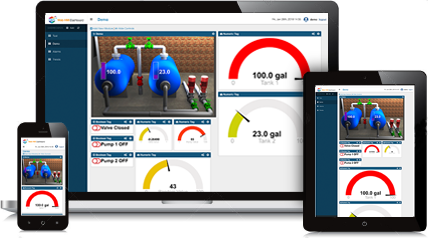These are but a few problems you may be faced with when you’re locked into using a proprietary or “canned” HMI solution. Of course, every product has its benefits, and your current solution is no exception. Proprietary solutions do a great job of getting you up and running quickly, and are geared towards developing visualizations with little or no programming skills. But these benefits come with a cost: lock-in.
In order to develop these drag-and-drop or non-programmatic HMIs, vendors supply proprietary tools and deployment platforms. You’re often restricted on what type of visualization you can create within their sandbox, limited on what applications you can share data with, and you can rarely integrate with your own custom graphics and applications.
The solution? An open architecture such as the OAS Platform.
When a product uses an open architecture, you can use commodity servers, development tools, and they are built from the ground up for integration. The OAS Platform even exposes multiple APIs for automation and data visualization development in ANY application platform and language.
Benefits of Open Visualization
- Ubiquitous or common skills needed to develop a visualization
With an open platform, you can build a team from the millions of developers and consultants with .NET and web application development experience. Common languages and popular development tools are all supported such as C#, VB, Javascript, Python, Visual Studio and your favorite code editor. - Licensing and distribution costs are dramatically lower
Incremental costs can typically be capped when adding new clients or screens. The OAS Platform allows for unlimited client connections with no additional fees or per-seat charges, so you’re free to expand without breaking the bank. - No limitations on the type of visualizations possible
Using common tools for developing your own symbols and screens, or using any 3rd party set of graphics, you can now create the screen you need and not just settle for what your HMI builder supports. Create images and symbols in popular graphics editing suites, 3D modeling packages, or anything that can produce standard files such as JPG and PNG to be used in Windows, web, and native applications. - No vendor lock-in
You are free to integrate existing products for the best solution. Don’t get rid of what you already have, enhance and improve it by integrating an Open Visualization.
How-to Develop an Open Visualization
Step 1: Connect your data to the OAS Platform
The OAS platform supports connectivity to virtually any data source through options such as native device drivers, database access, or API integrations

Step 2: Organize your data structures

Step 3: Connect your visualizations

